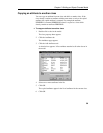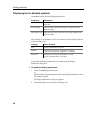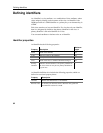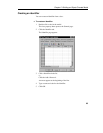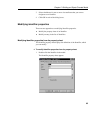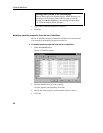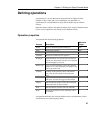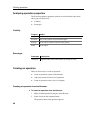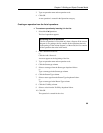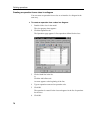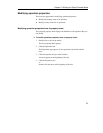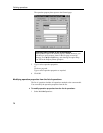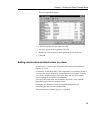
Chapter 2 Building an Object-Oriented Model
67
Defining operations
An operation is a service that can be requested from an object to effect
behavior. It has a name and a list of parameters. An operation is a
specification of a transformation or query that an object may be called to
execute.
Operation names within a class must be unique. You can give identical names
to two or more operations only if they exist in different classes.
Operation properties
An operation has the following properties:
Property Description
Maximum
length
Parent Object to which the operation belongs to 254
Name Name of the operation 254
Code Reference name for the operation 254
Comment Descriptive comment for the operation —
Stereotype Subclassification of an operation derived from an
existing one. Extends the semantics of an operation
without changing it's structure
—
Return Type A list of values returned by a call of the operation.
If there are no values returned by the operation, the
return type value is null
—
Visibility Visibility of the operation, whose value denotes
how it may be seen outside its enclosing name
space
—
Event Significant occurrence that has a location in time
and space. An event can trigger a state transition
—
Abstract Indicates that the operation cannot be instantiated
and therefore has no direct instances
—
Final Indicates that the operation cannot be redefined —
Static Defines the operation as static, meaning it cannot
be modified
—
An operation definition also includes business rules, and parameters, which
are defined on associated property sheets.



